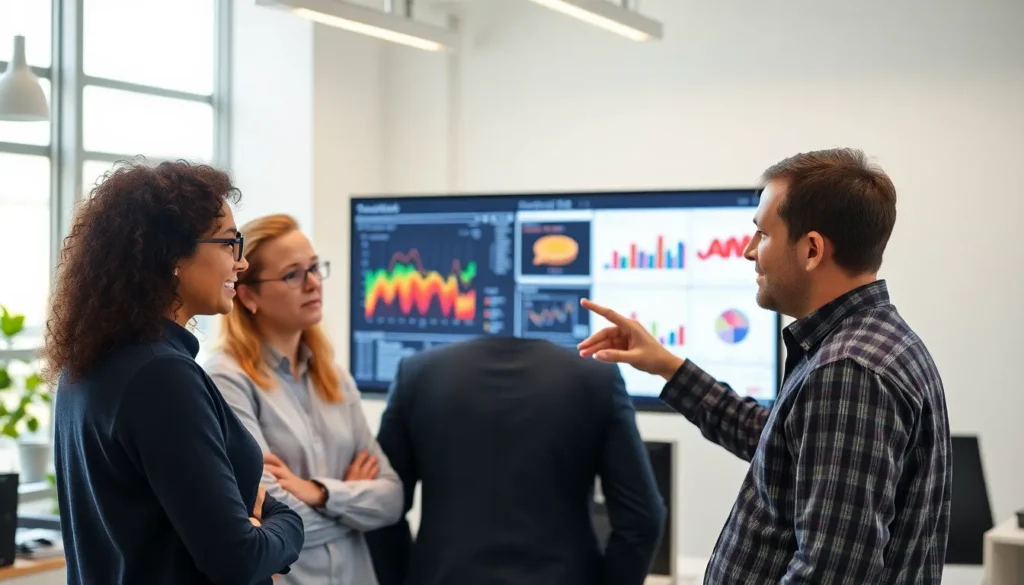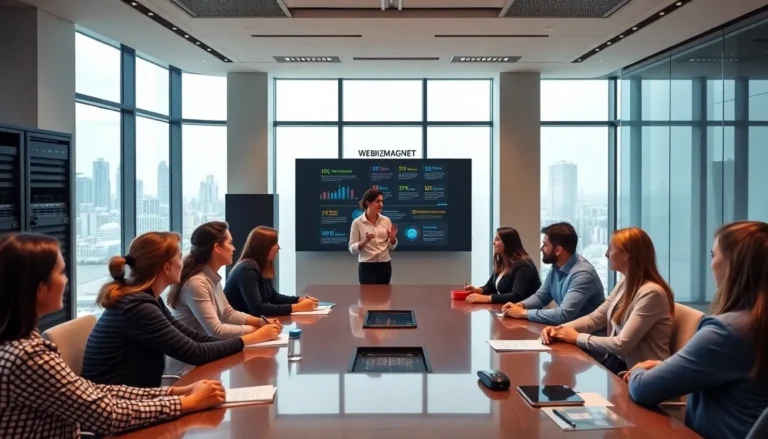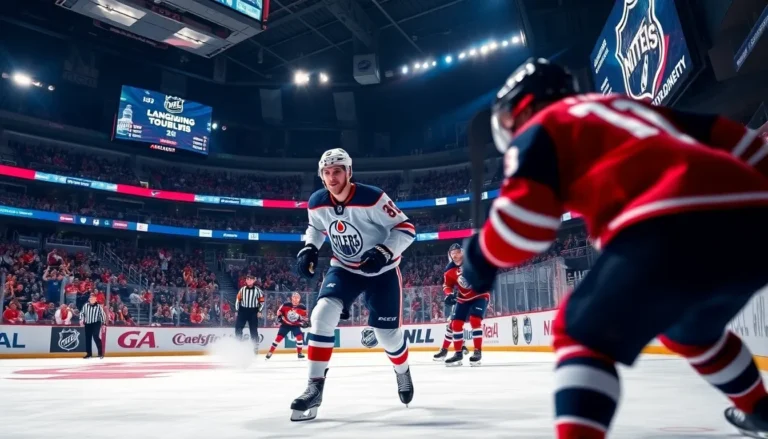Table of Contents
ToggleIn a world overflowing with information, it’s easy to overlook the subtle signals that guide our understanding. Enter visual cue analysis, the superhero of communication that swoops in to save the day. By decoding the unspoken messages hidden in images, colors, and layouts, it transforms the mundane into the magnificent.
Overview of Visual Cue Analysis
Visual cue analysis serves as a significant method for deepening understanding in communication. Recognizing non-verbal signals in visuals plays a crucial role in interpreting meanings beyond words.
Definition and Importance
Visual cue analysis involves studying how various visual elements shape perceptions and convey messages. This analysis focuses on the impact that colors, images, and layouts have on viewers. By grasping these subtleties, individuals gain the ability to enhance their communication effectiveness and create more engaging content. High-quality visuals can transform basic messages into compelling narratives. Effective use of visual cues also supports audience retention and comprehension.
Key Components
Key components of visual cue analysis include color, imagery, and composition. Color influences emotions and reactions, making it essential for strategic use in design. Imagery captivates attention and adds context, strengthening the message offered. Composition refers to how elements are arranged, guiding the viewer’s focus and response. Each component works together to establish a cohesive visual message. Understanding these elements allows for the creation of more impactful visuals that resonate with audiences.
Techniques in Visual Cue Analysis

Visual cue analysis employs various techniques to enhance communication effectiveness. Both qualitative and quantitative methods play vital roles in examining visual elements.
Qualitative Methods
Qualitative methods focus on exploring subjective interpretations of visual cues. Interviews and focus groups often reveal how individuals perceive colors, images, and layouts. Observational studies also provide insights into viewer reactions to different visual elements. Case studies highlight effective visual communication through real-world examples. Participants’ feedback gathers rich data, offering valuable context for understanding emotional responses. By prioritizing these direct experiences, professionals can tailor visuals to resonate deeply with their audiences.
Quantitative Methods
Quantitative methods involve systematic measurement and statistical analysis of visual cues. Surveys can quantify viewer preferences regarding color choices and imagery. A/B testing reveals which visual elements yield higher engagement rates in various contexts. Eye-tracking technology measures how viewers interact with specific components. Data analysis often highlights trends and patterns, allowing for informed design choices. Using these numerical insights, creators optimize their visual content for maximum impact and effectiveness.
Applications of Visual Cue Analysis
Visual cue analysis plays a significant role in various fields, enhancing communication effectiveness and audience engagement. Understanding its applications can lead to more impactful visual content.
Marketing and Advertising
Visual cue analysis drives marketing and advertising strategies by creating compelling narratives. Brands utilize color psychology to evoke specific emotions, enhancing consumer connection. Imagery selection helps convey brand values, attracting target audiences. Informative layouts guide viewer focus toward key messages, leading to higher conversion rates. Companies conducting A/B testing often find that small changes in visuals can drastically affect engagement levels. By interpreting viewer responses, marketers tailor their content to resonate with consumer preferences, ultimately boosting brand loyalty.
User Experience Design
User experience design benefits significantly from visual cue analysis. Designers apply insights about color schemes and imagery to enhance usability. Attention-grabbing buttons and informative icons draw users toward key functions. A well-structured layout improves navigation, reducing frustration and improving satisfaction. Utilizing eye-tracking technology allows designers to identify which elements capture user focus. By understanding viewer behavior, designers create intuitive interfaces that facilitate smooth interactions, leading to increased user retention.
Challenges in Visual Cue Analysis
Visual cue analysis faces various challenges that can hinder its effectiveness. These obstacles range from issues with data interpretation to technological limitations.
Data Interpretation Issues
Data interpretation issues arise when analyzing insights from visual cues. Misunderstandings can occur due to subjective perceptions of images and colors. Viewer backgrounds, experiences, and emotions significantly influence how visual elements are interpreted. Inconsistent findings may emerge, affecting communication strategies. Specific methods like focus groups and interviews can help clarify viewer interpretations, yet they often introduce bias. Ensuring consistent evaluation criteria becomes vital in overcoming these challenges while gaining accurate insights. Thus, ambiguity in data interpretation poses a key hurdle in applying visual cue analysis effectively.
Technological Limitations
Technological limitations hinder the full potential of visual cue analysis. Analyzing visual data often requires advanced tools that may not be accessible to all organizations. Eye-tracking technology, for example, can provide valuable insights but remains expensive for smaller businesses. Furthermore, software for visual analytics sometimes lacks user-friendly interfaces, complicating the analysis process. Compatibility issues between systems can also arise, making data integration challenging. As a result, the reliance on specific technologies can constrain effective analysis and interpretation in various fields. Overcoming these limitations is essential for maximizing the impact of visual cue analysis.
Future Directions of Visual Cue Analysis
Innovations in technology promise to elevate visual cue analysis to new heights. Advanced tools like machine learning algorithms and artificial intelligence provide improved efficiency in analyzing vast amounts of visual data. These technologies enhance the capability to identify patterns in viewer reactions and emotions. Additionally, augmented reality applications create immersive environments that allow for real-time analysis of visual cues in various contexts. By integrating these innovative technologies, professionals can glean deeper insights and create more engaging visual content that resonates with audiences.
Innovations in Technology
Cutting-edge technology continues to reshape visual cue analysis methodologies. Eye-tracking software offers precise measurements of viewer focus, contributing valuable data for optimizing visual elements. Virtual reality systems enable the examination of viewer interactions within simulated environments, enhancing understanding of user experiences. Furthermore, neural networks analyze complex visual patterns, uncovering subtle cues previously overlooked. These innovations provide creators with powerful tools to craft visuals that align closely with audience expectations.
Potential Research Areas
Exciting research opportunities in visual cue analysis exist across multiple disciplines. Investigating the effectiveness of color combinations on specific demographics reveals valuable insights into emotional responses. Exploring cultural differences in visual cue interpretation helps tailor communication strategies for global audiences. Analyzing the long-term effects of visual storytelling can uncover how sustained engagement impacts viewer retention. Partnerships between academia and industry facilitate the development of more nuanced methodologies, driving forward the field of visual cue analysis.
Visual cue analysis offers a transformative approach to understanding communication through imagery and design. By recognizing the nuances of visual elements, creators can craft messages that resonate on a deeper level. The integration of qualitative and quantitative methods enriches the analysis, ensuring a comprehensive understanding of viewer engagement.
As technology evolves, the potential for visual cue analysis expands, paving the way for innovative applications in various fields. The collaboration between industry and academia will be crucial in refining methodologies and addressing existing challenges. Embracing these insights will not only enhance content effectiveness but also foster stronger connections between brands and their audiences.







